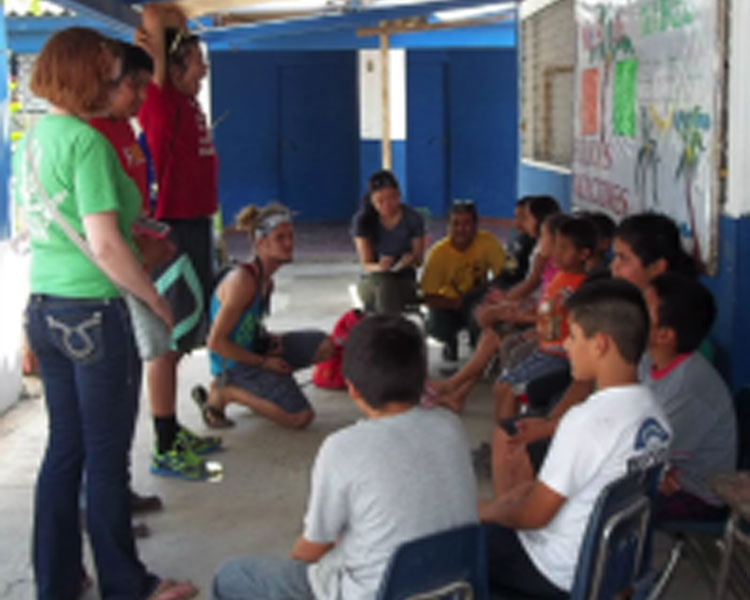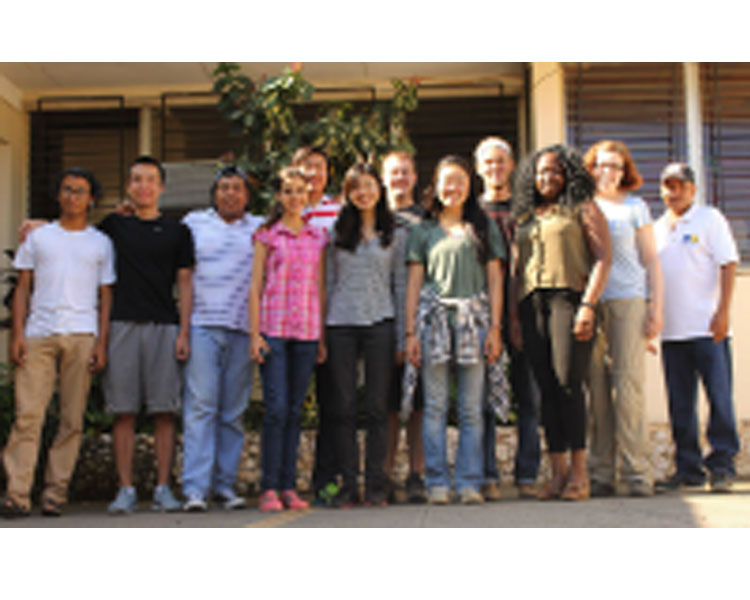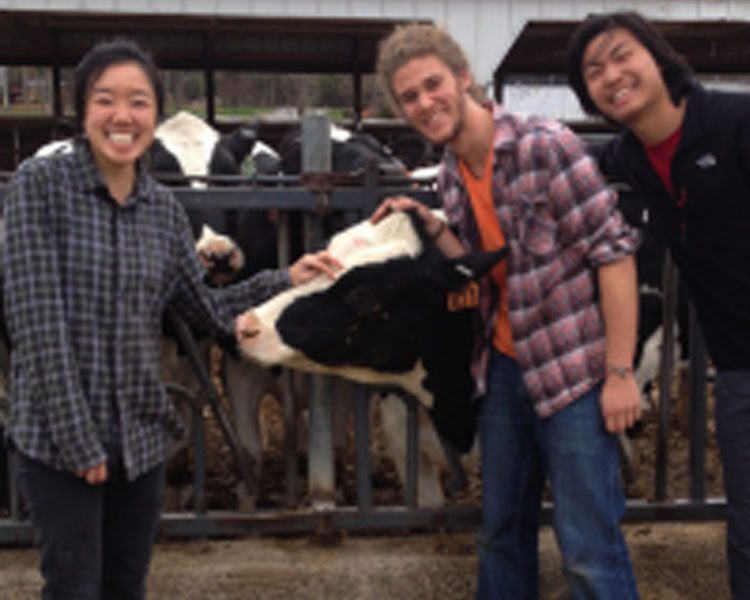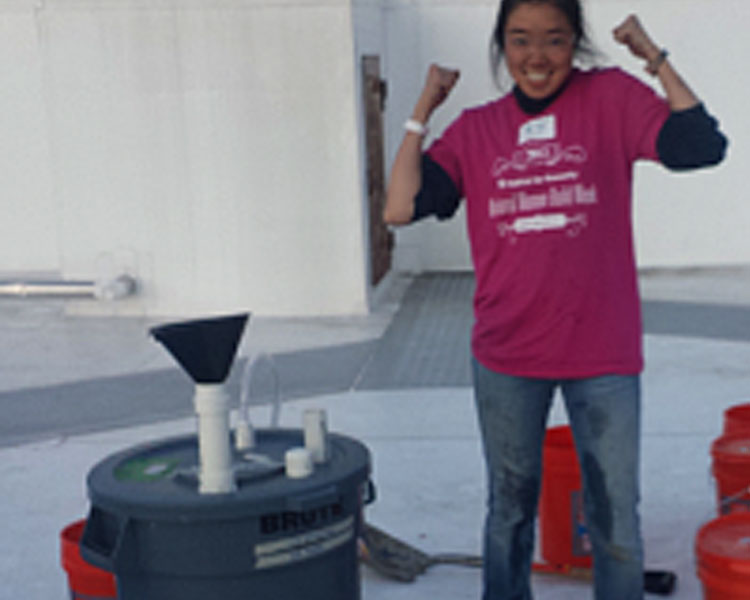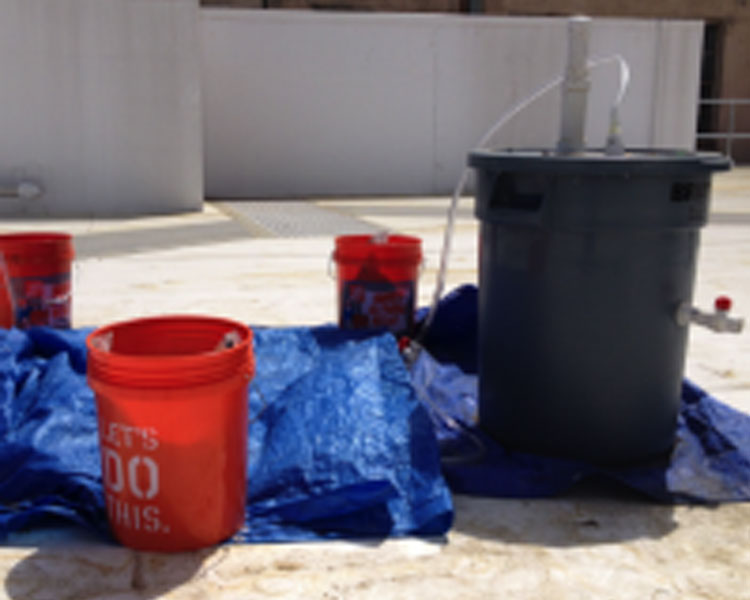
“Janet, you smell interesting…in a bad way.” Okay, I admit. I am not one to shower every day, but this time my roommate was commenting on a more offensive scent—cow manure. “Consequence of playing around with 15 gallons of poop,” I half-jokingly replied. I was covered in brown splatter, wreaked of a horrible stench, and felt aches in my back. Why was I in this messy state? Three reasons: a desire not to fail, poor design aspects, and the belief in poop power.
A desire not to fail
I hate failing academically and not meeting the expectation of others. My motivation for “playing around with poop” was no different—though, truthfully, the desire not to disappoint others came later.
This past semester, Fernando Ruiz ‘16, Andrew Xia ’17, and I were “D-Lab: Energy” students working on a biodigester project. We spent the first half of the course exploring alternative energy technologies that could be implemented in D-Lab’s partner communities.
Our team specifically focused on biodigestion: converting organic matter (like manure!) into methane gas and fertilizer under anaerobic conditions with methanogenic bacteria (also found in manure!). Impressed by this possibility of using waste to create energy, we named ourselves the “Poop Power” team.
By spring break, Poop Power was on a plane heading to El Salvador to determine the feasibility of biolatrines as a means to manage waste and provide a cooking fuel. While in the country, we worked closely with our partner organization, ASAPROSAR, to visit local families and schools. We gathered information on the community’s energy needs and waste disposal habits as well as necessary changes to the previous biodigester design. Our five biggest take-aways are:
- Previous biodigester users struggled to find enough animal manure to produce methane gas.
- New biodigester design should be more durable than previous polyethylene-bag design.
- Families purchase propane gas, either subsidized by government ($5 per 25-pound tank) or at full price ($15 per 25-pound tank), as a supplement to gathering firewood.
- When asked about using gas produced from human waste, some showed hesitation but others were open to the idea if the technology could save money and time.
- Students avoid using latrines at school due to poor conditions.
Many of the conversations occurred over delicious meals eating homemade pupusas or drinking fresh-off-the-tree coconut juice! In addition to good food, we met and worked with wonderful people (Thank you Marizta, Geovany, and Noel at ASAPROSAR as well as Cesar and Elena, the university students we worked with). These individuals not only work hard to improve their own lives, but also build-up the surrounding communities. Due to their inspiring work and benevolent attitude, failure is not an option for our team. We made too many new friends that we can’t disappoint.
Poor design aspects
The direct cause of the wretched state my roommate saw me in came from poor design choices. Post spring-break, armed with a new motivation and a lengthy list of design variables to test, our team decided to spend the remainder of the semester building and maintaining a biodigester prototype at D-Lab.
Gaining administrative approval and sourcing the cow manure was no easy task, but we eventually found an appropriate location to build the biodigester (thank you Joe, Craig, and Greg at MIT Facilities and EHS Department) as well as a local cow farm to supply the waste (shout out to Ned and Howard at the Richardson’s Farm).
Despite our efforts to create a suitable implementation plan, handling manure still proved to be messy. We drove out to the farm, shoveled up 15 gallons of cow manure, and transported it back to D-Lab without too much spillage (though the manure smell lingered in the car for a few days after). We overlooked some aspects of our design, which consequently made setting up the biodigester the messiest step. Mixing the manure with water, pouring it into the biodigester, and cleaning the equipment all caused more splattering and overflow than anticipated.
Our team identified five aspects that will need to be addressed in future iterations and implementation:
- Need for close-proximity and easy transport of waste, which can otherwise be time-consuming and messy.
- Larger opening for pouring waste is necessary to reduce difficulties, time, and overflow.
- Stirring mechanism desired. Despite mixing manure and water well, solid waste settles to bottom of biodigester, which causes blockage.
- New design should minimize potential places of gas leakage.
- Safety plan should address concerns of smell, pressure build-up, flame retreating, containment/handling of spills, and tripping/injury hazards.
However the entire experience—from seeking approval to waste handling—brought valuable insights into setting up a biodigester. These hurdles parallel obstacles communities in El Salvador may face: gaining community acceptance, finding a suitable location and waste source, suitable design, etc.
Belief in poop power
Despite reeking of cow manure, I still had a smile on my face as I explained to my roommate the reason for my mess. Even now, weeks later, when our biodigester has yet to produce gas, my teammates and I are still just as invested in our project. We see the potential in this technology to simultaneously address waste management and energy needs in an appropriate and affordable manner.
Our project builds upon work made by previous D-Lab students, and it has been an enjoyable semester being on the Poop Power team (final shout out to Libby and Amit, the class instructors, as well as Jack, the shop manager). We hope our project has contributed to the progress and will help future teams in pursuing biodigestion.
Would I do this again, manure and all? Without hesitation, yes. As my teammate, Andrew, would say, “It’s a crappy job, but somebody’s got to poo it!”
